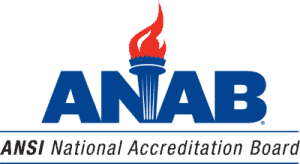Transformational Change in 529 Plans: What This Means for ANAB Accredited Programs

A new chapter has opened for American learners and professionals with the passing of Public Law 119-21, the “One Big Beautiful Bill Act.” The Act was signed into law on July 4, 2025 and amends Section 529 of the Internal Revenue Code to add the term “Recognized Postsecondary Credential.”
Recognized Postsecondary Credentials include postsecondary employment credentials that are industry recognized and are issued by a program that is accredited by certain third-party accrediting bodies such as the ANSI National Accreditation Board (ANAB) This is a significant development for credentialing bodies accredited by ANAB under ISO/IEC 17024, ANSI/ASTM E2659, ASTM D8403, and the Conference for Food Protection.
This law expands the qualified uses of 529 Plans (also known as Qualified Tuition Programs) to include “Qualified Postsecondary Credentialing Expenses” associated with Recognized Postsecondary Credential Programs. In effect, this change transforms Section 529 Plans from being just college savings plans to flexible skills-based alternative credentialing savings plans. When a parent is making a financial decision regarding funding a child’s career, they can now select a traditional college degree option or from a broader array of credentialing programs.
This change could provide an added incentive for parents to open a 529 Plan knowing that the funds can be used for certain credentialing related expenses. This means that individuals can now tap their 529 Plan savings to cover qualified credentialing expenses such as: certification exam fees, training costs, and continuing education and recertification fees. This helps remove one of the biggest barriers to professional development, cost, while reinforcing the credibility and value of ANAB accredited credentials.
The Role of ANAB-Accredited Credentialing Bodies
The Act provides opportunities for programs accredited by ANAB to grow and expand. Some of the tangible steps that an accredited credentialing body can take include:
- Effective communication with candidates highlighting the benefits of an accredited program and eligibility for 529 Plan funding.
- Strengthening partnerships with schools, vocational institutions, community colleges. These partners can highlight this funding pathway to attract more learners and promote certifications and certificates as a career investment.
- Promoting access to working adults, career changers, and military personnel by highlighting funding options and importantly communicating the value of industry recognized credentials to open doors for in-demand jobs.
- Reinforcing the value of quality accredited credentials to employers and industry.
In summary, the expansion of 529 Plan eligibility to include Recognized Postsecondary Credential Programs marks an important moment for the credentialing community. It bridges the gap between educational savings and workforce development. The change reinforces the value of ANAB accredited credentials as trusted pathways to employment.






